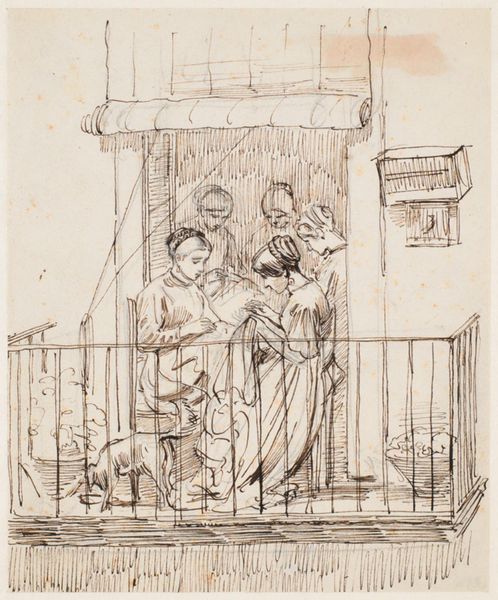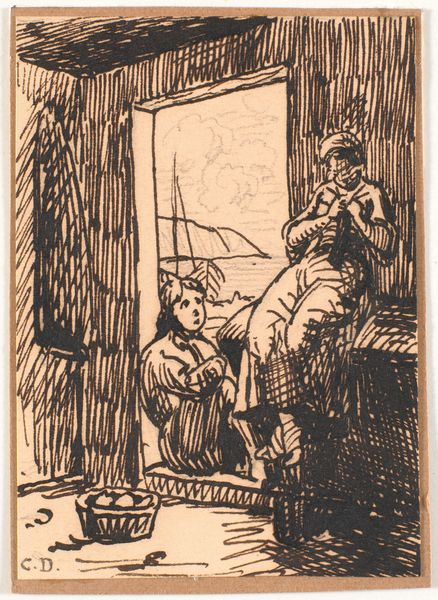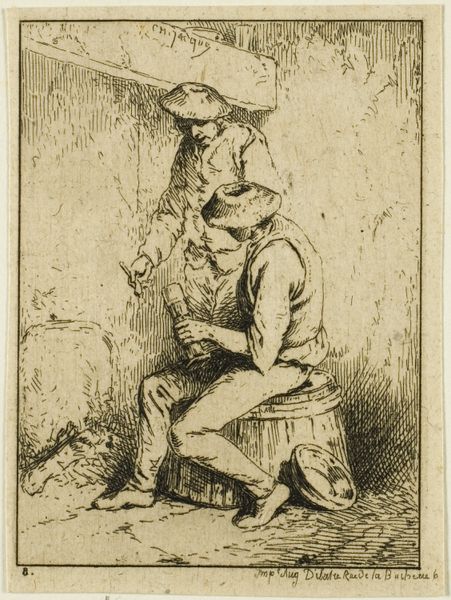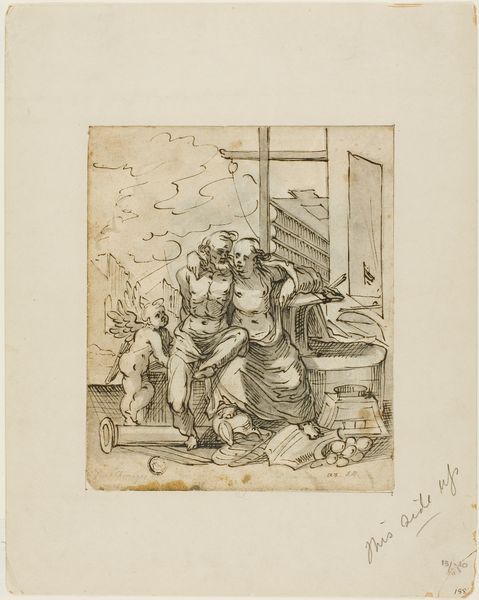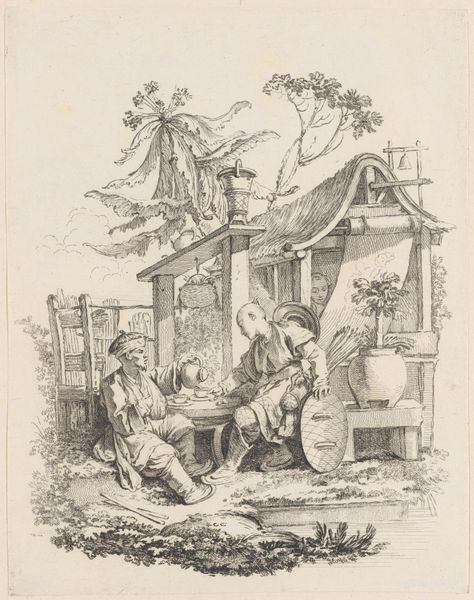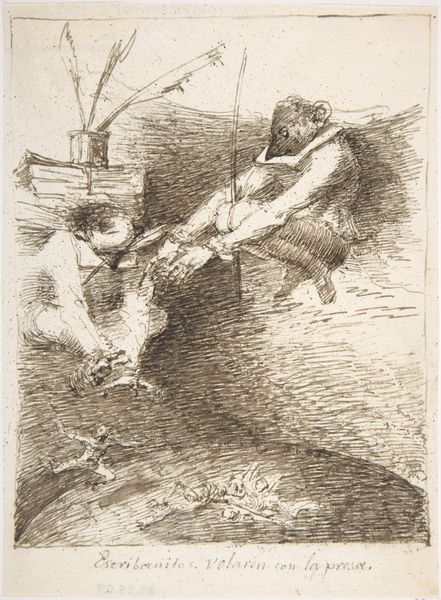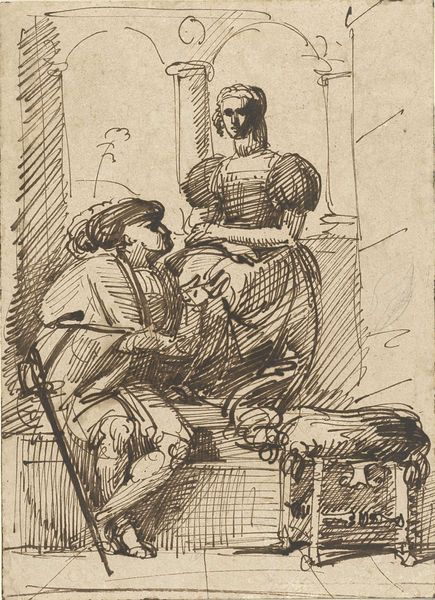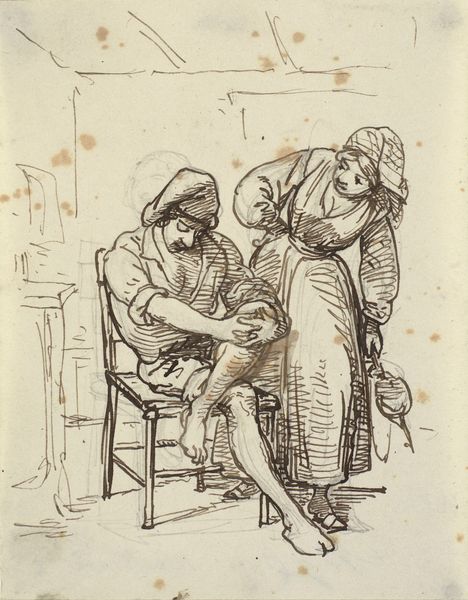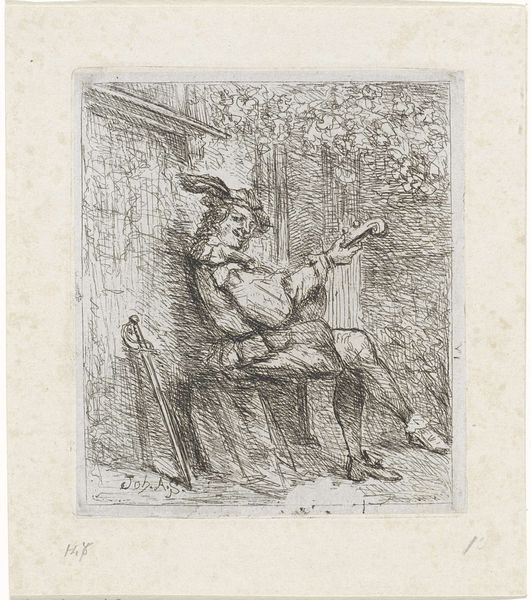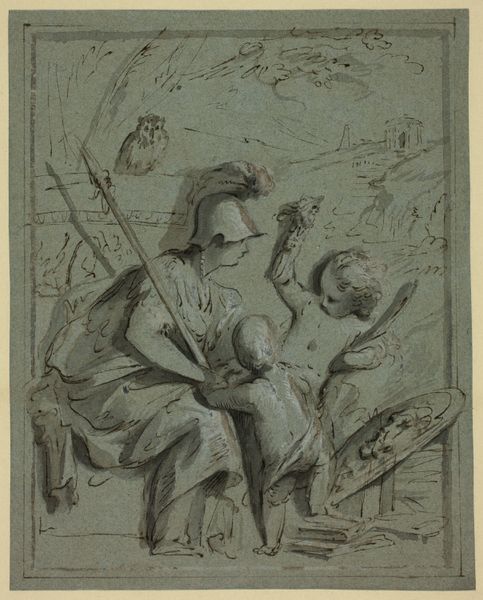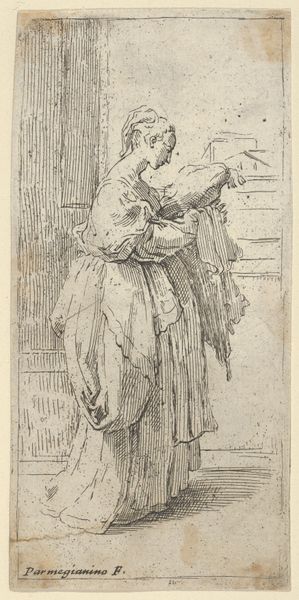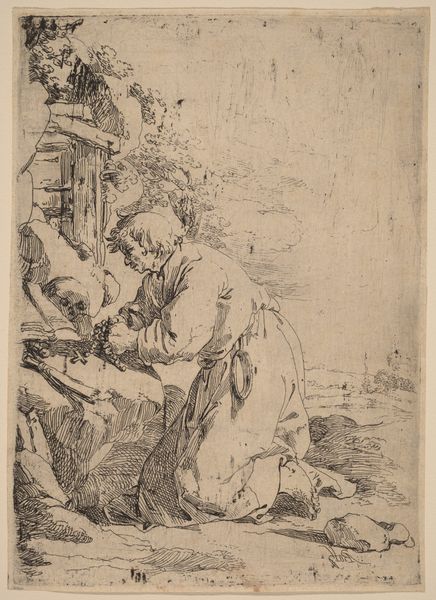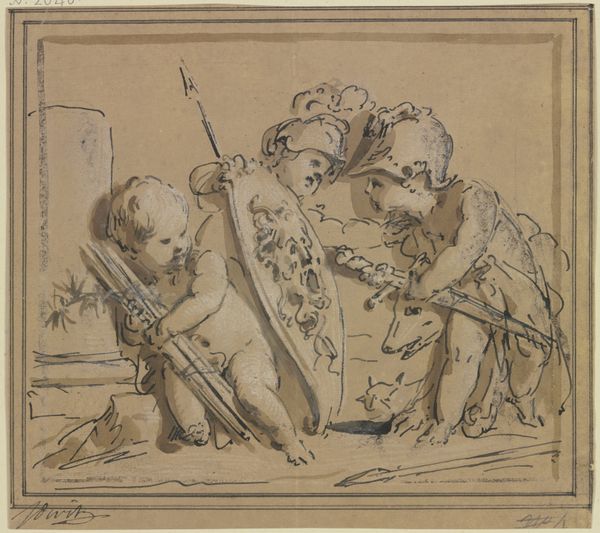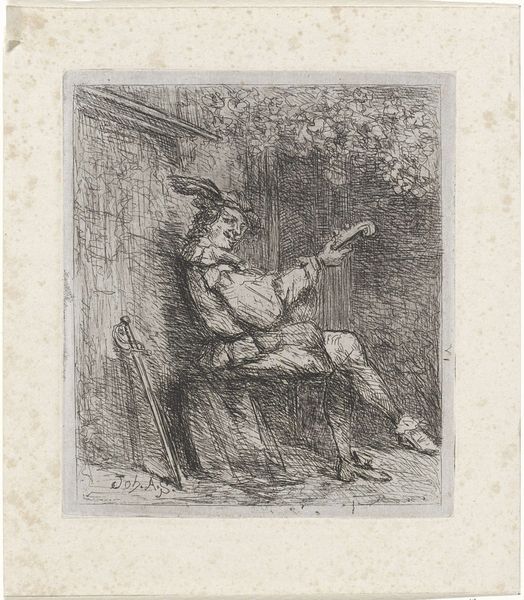
drawing, ink, pen
#
portrait
#
landscape illustration sketch
#
drawing
#
ink drawing
#
mechanical pen drawing
#
pen sketch
#
personal sketchbook
#
ink
#
sketchwork
#
ink drawing experimentation
#
pen-ink sketch
#
sketchbook drawing
#
pen
#
genre-painting
#
storyboard and sketchbook work
#
italian-renaissance
#
realism
Dimensions: 175 mm (height) x 137 mm (width) (bladmaal)
Editor: Here we have Wilhelm Marstrand's "Romersk gadescene," created sometime between 1810 and 1873 using pen and ink. It feels very immediate and personal, almost like a candid snapshot. The lines are so energetic. What do you see in this scene? Curator: It's interesting that you call it a snapshot. Sketches like this function almost like memory prompts, preserving not just the visual facts, but also a feeling, an atmosphere. Look at the mother tending to the child – this resonates with universal themes of nurture and care. Note the cat resting languidly on the wall, seemingly indifferent, a common motif representing domesticity, but perhaps here a gentle nod towards the ordinary continuities of life amidst the backdrop of historical Rome. Editor: I hadn't considered the cat as anything more than just part of the scenery. So you're saying it's less about the specific Roman street and more about the timeless connection between mother and child? Curator: Exactly. Marstrand has captured an archetype, really. How does the act of drawing itself contribute to the artwork's overall meaning, would you say? Editor: Well, the medium definitely adds to that sense of immediacy. It’s not trying to be a grand, finished statement. Curator: Yes, think of the quick, sure strokes. It reminds us that images themselves become cultural containers. This "street scene" in ink is itself carrying centuries of symbolic meaning forward. Editor: That’s a completely different way to see it. I was focused on what was depicted, not *how* it was depicted and what that communicates. Curator: Precisely. And now you’re looking at the image, in its entire materiality, in an entirely different, deeper way.
Comments
No comments
Be the first to comment and join the conversation on the ultimate creative platform.
